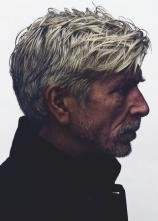Karl Ove Knausgaard
Biography
Karl Ove Knausgaard
Karl Ove Knausgaard’s first novel, OUT OF THE WORLD, was the first-ever debut novel to win the Norwegian Critics’ Prize, and his second, A TIME FOR EVERYTHING, was widely acclaimed. The My Struggle cycle of novels has been heralded as a masterpiece wherever it has appeared.
Karl Ove Knausgaard
















